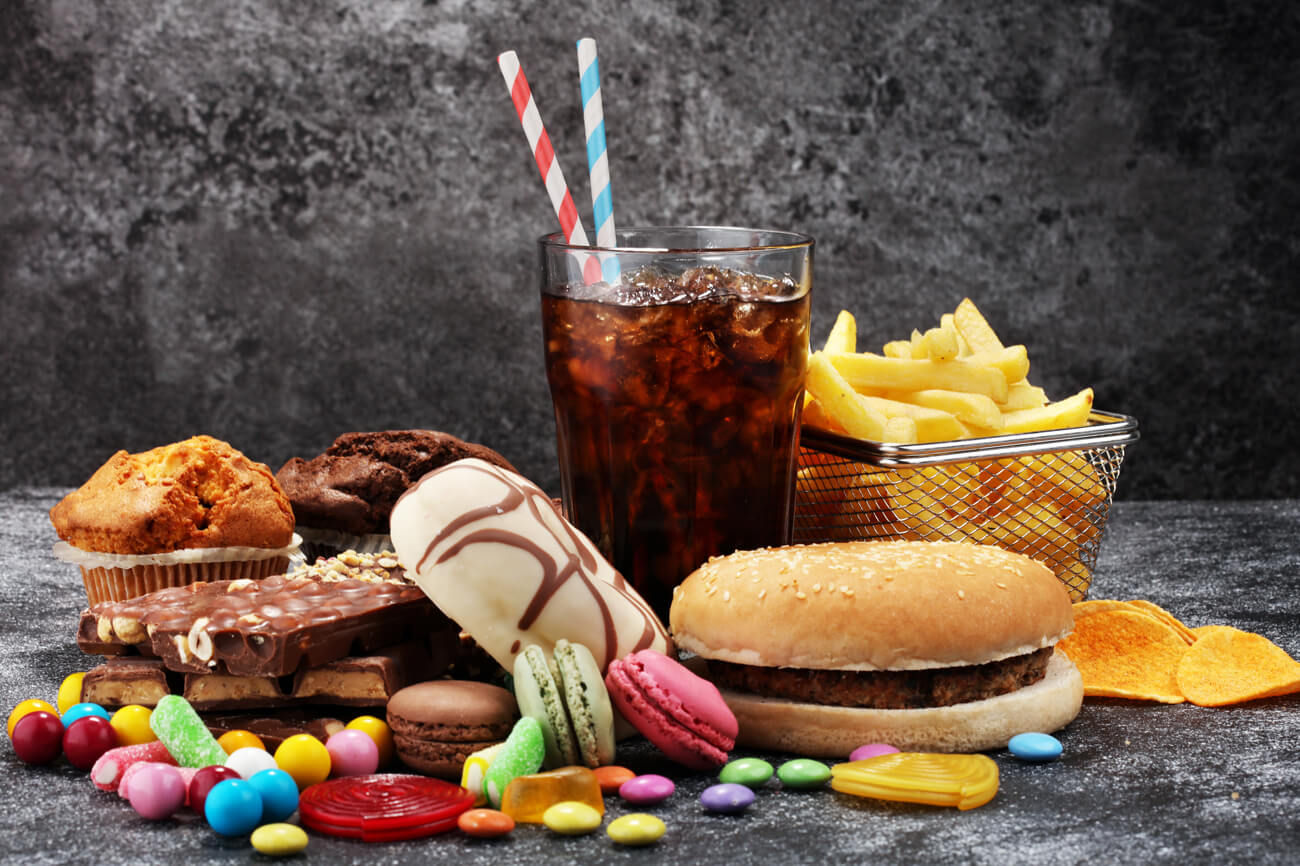
22 Feb 2021 Ultra-processed foods – what are they?
When we think about making healthy food choices, it is easy to get confused with so many processed and ultra-processed foods available on the supermarket shelves. So, what exactly are ultra-processed foods?
A recent survey by the British Nutrition Foundation (BNF) suggests that people find it difficult to distinguish between foods classed as ultra-processed versus processed foods. Seventy percent of British adults had not heard of the term ultra-processed food before. The definition comes from a food classification method called NOVA, which defines ultra-processed foods as those made by industrial processing. These often contain additives such as colours, flavours, emulsifiers or preservatives. The ultra-processed foods differ from minimally processed foods, which have undergone some processing to enhance safety or improve edibility, such as pasteurised milk.
What is clear is that we live in an age of convenience where ultra-processed foods and drinks are all around us, readily available, often at low prices, all of which contributes to making them more appealing. Studies show many of these foods and drinks to be detrimental to human health, and yet they form the basis of many people’s diets. There are snacks and fast-foods available at every turn, and we are seeing eating habits moving from 3 meals a day to a model of constant grazing. Many people are simply eating too much and too often, which has led to a continued increase in rates of obesity, blood sugar imbalances, insulin dysregulation, type 2 diabetes, and high cholesterol.
More than one-fifth of the BNF survey respondents (21 percent) say that a healthy, balanced diet should not include any ultra-processed foods. When given a list of foods and asked which they would classify as ultra-processed, just eight percent selected canned baked beans, nine percent low-fat fruit yoghurt, 12 percent ice cream, 19 percent pre-packaged sliced bread from a supermarket, 26 percent ready-made pasta sauces, and 28 percent breakfast cereals with added sugar, despite all the above being classed as ultra-processed by NOVA. This highlights the conundrum many people have in identifying what foods are ultra-processed. Another interesting finding from the survey regarding food labelling shows that 43 percent of men and 51 percent of women agreed that checking the nutrition label on processed foods can help them make healthier choices.
Encouragingly, 69 percent of those surveyed say they agree with the statement that “it’s better to cook from scratch than use processed foods”. 53 percent of those surveyed agree that a healthy, balanced diet can include some processed foods, and 49 percent say that processed foods can be convenient and help save time. When it comes to cooking from scratch, the greater variety of fresh and wholefood ingredients you can use, the more likely it is that you will reduce the need for ultra-processed products.
The survey raises plenty of interesting areas for discussion about how best to navigate the supermarket aisles, what to look out for on food labels, and how to limit your intake of ultra-processed foods in favour of more nutrient-dense ingredients. These are some of the topics we’ll be exploring in more detail as part of our Food for your Health campaign.


